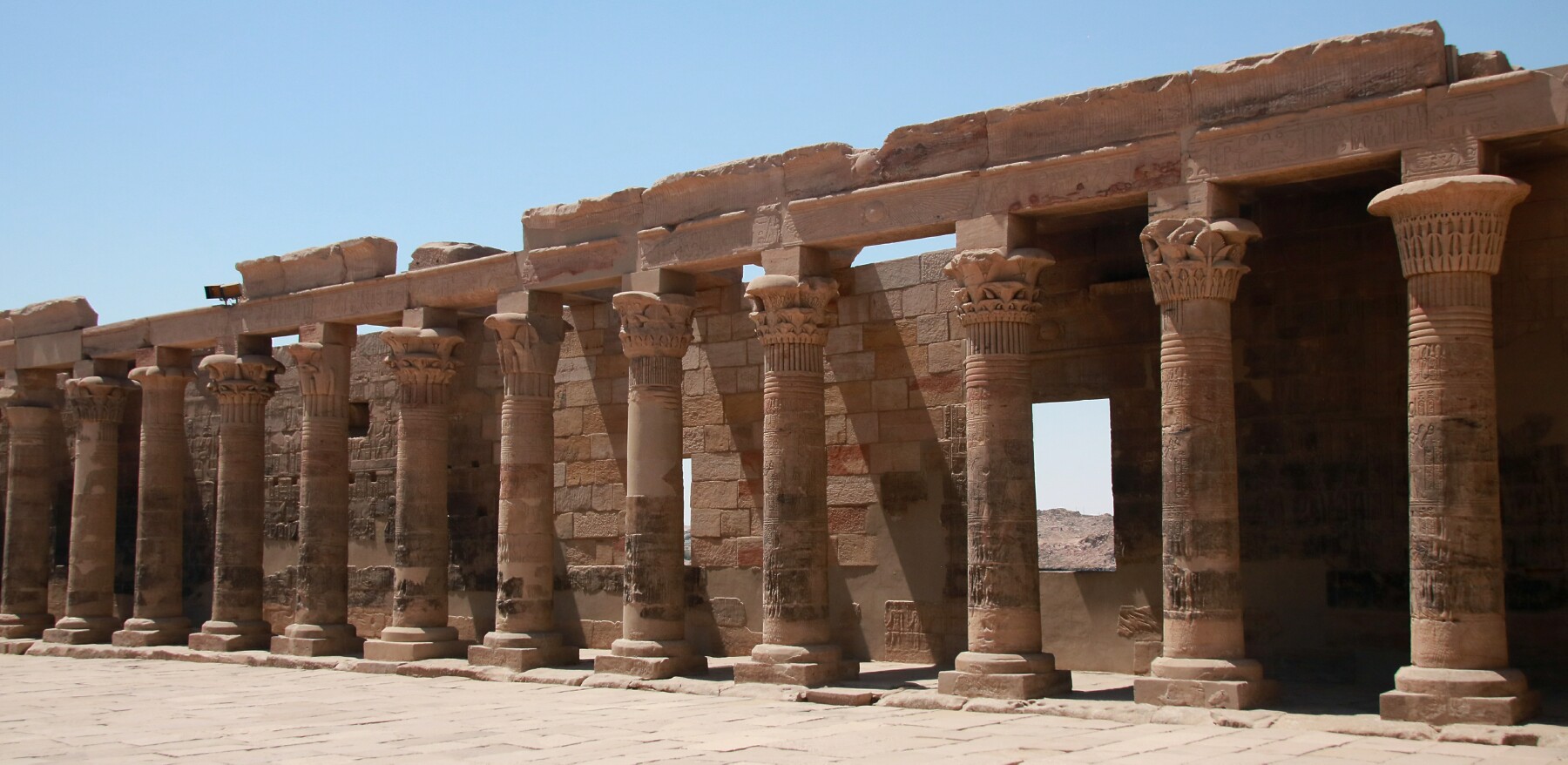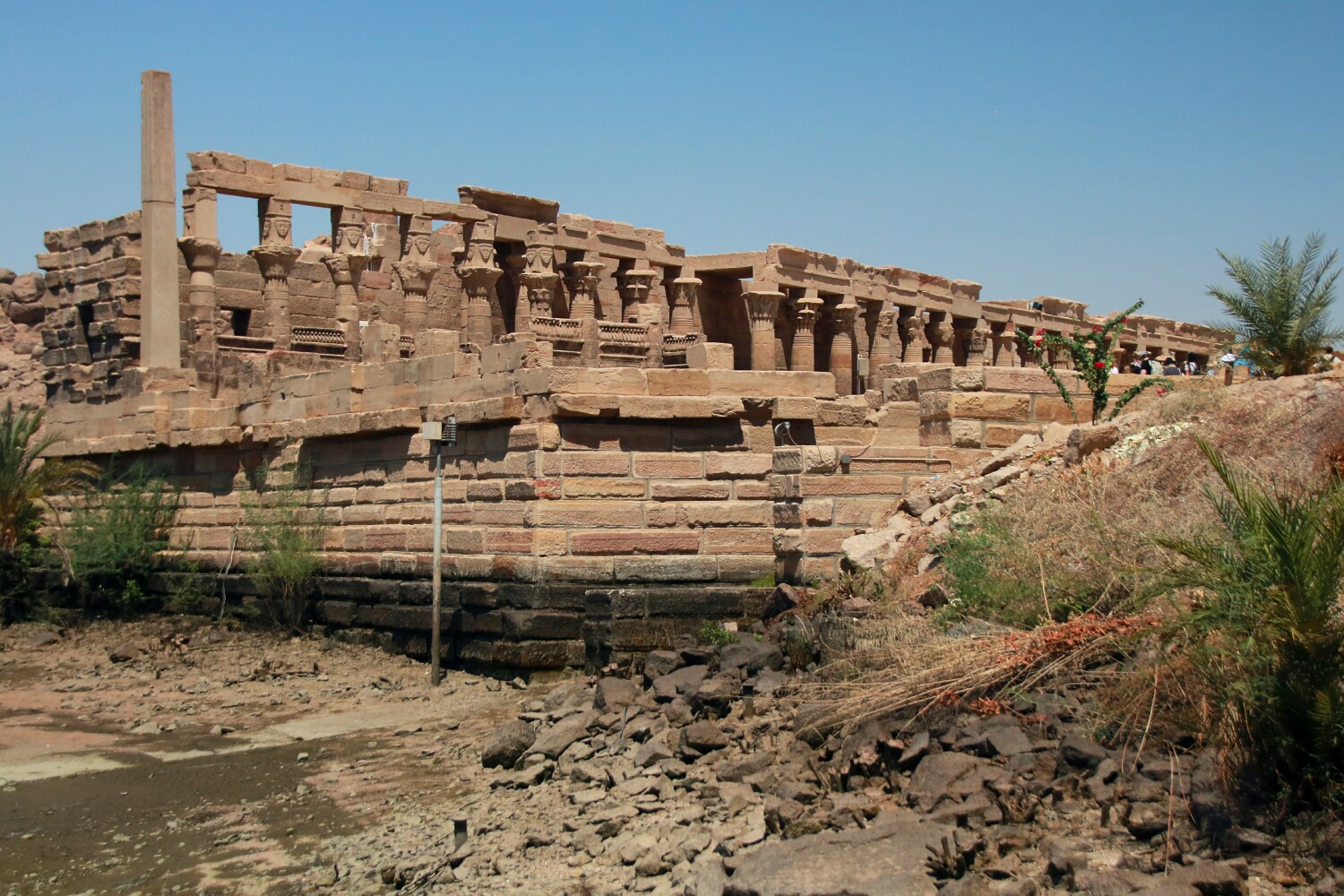Egypt: Day 4
September 19, 2022
|

Above: The West Colonnade of the Outer Court of the Philae Temple complex. Most of the complex was built, from around 300 BC to 100 BC, by
the Greek Pharaohs after Alexander the Great conquered Egypt in 322 AD, although the most ancient temple was built in the reign of Nectanebo I
during 380-362 BC, close to the Nile River.
The complex was partially underwater since 1902 when the Aswan Low Dam was opened. To move the complex to higher ground, two rows of steel
plates between which 1 million cubic metres of sand was tipped. Any water that seeped through was pumped away. Monuments were cleaned
and measured, by using, photogrammetry to enable the exact reconstruction of the original size of the building blocks that were used originally.
Every building was dismantled into about 42,000 units from 2 to 25 tons, and then transported to the nearby Island of Agilkia, situated on
higher ground 500 metres (1600 ft) away. The transfer itself took place between 1977 and 1980.
|
1 and 2 is the Temple of Nectanebo I, built sometime between 380 and 362 BC.
3 to 6 show the current, and submerged in its original location before relocation, the unfinished Kiosk of Emperor Trajan, 98-117 AD. The structure is
roofless, but sockets within the structure's architraves suggest that its roof, which was made of timber, was indeed constructed in ancient times.
7 to 8 show the West Colonnade in the Outer Court. Notice the dark portion of each column in #7 ... that is how high the water was after flooding.
10 and 11 show the Outer Court and the First Pylon monumental gate to the temples behind.
|

|
|